The witch is one of the most universally charged archetypes across cultures and history — as an imagined spiritual threat, as a symbol of feminine disobedience, as an institution that exists outside structures of state power, as a historical nexus of fear and violence, as a demographic of real people with real practices and beliefs who have influenced the development of our shared modern world. The witch is revisited constantly in stories, folklore, movies, political discourse — sometimes she’s frightening, sometimes she’s compassionate; always she’s powerful.
Whether you’re interested in witches as a horror trope, a doorway to sex positivity, a topic of historical exploration, or rich characters and ideas in fiction or poetry, at least one of these witch books will bring something into your life! Get your deep dives into the witch hunt frenzy of 1692 Salem; guides to your own personal practice and craft; novels about witches past and present and their complex, compelling stories; dark, provocative witchy poems or mindblowing criticism about the role of the witch in our cultural past and present.
shop all our witch book recommendations
Witches, Sluts, Feminists: Conjuring the Sex Positive
Kristen J. Sollee
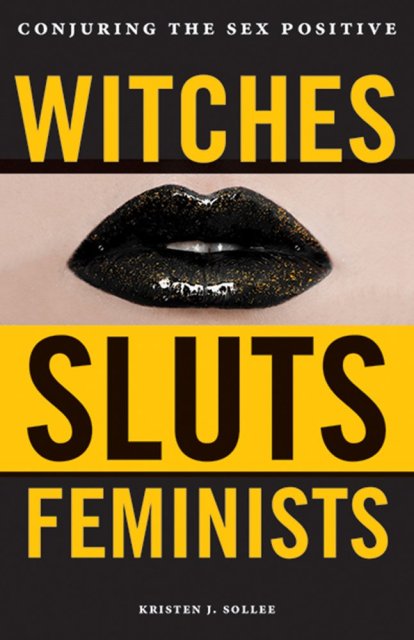
Witch, Slut, Feminist: these contested identities are informing millennial women as they counter a tortuous history of misogyny with empowerment. This innovative primer highlights sexual liberation as it traces the lineage of “witch feminism” through art, film, music, fashion, literature, technology, religion, pop culture, and politics. Juxtaposing scholarly research on the demonization of women and female sexuality that has continued since the witch hunts of the early modern era with pop occulture analyses and interviews with activists, artists, scholars, and practitioners of witchcraft, this book addresses and illuminates contemporary conversations about reproductive rights, sexual pleasure, queer identity, pornography, sex work, and more. Author Kristen J. Sollee elucidates the ways in which women have been persecuted for their perceived connection with witchcraft, and how they have fought back, harnessing the legacy of the witch for revolutionary means.
Caliban and the Witch: Women, the Body and Primitive Accumulation
Silvia Federici

CALIBAN AND THE WITCH is a history of the body in the transition to capitalism. Moving from the peasant revolts of the late Middle Ages to the witch-hunts and the rise of mechanical philosophy, Federici investigates the capitalist rationalization of social reproduction. She shows how the battle against the rebel body and the conflict between body and mind are essential conditions for the development of labor power and self-ownership, two central principles of modern social organization.
Witches of America
Alex Mar
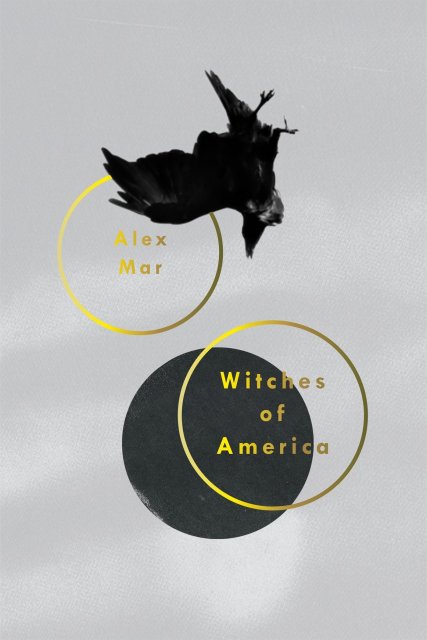
Witches of America is a memoir of Alex Mar’s immersive five-year trip into the occult, as both a journalist and someone searching for her own faith. She explores modern Paganism―from its roots in 1950s England to its present-day American mecca in the San Francisco Bay Area; from a gathering of more than a thousand witches in the Illinois woods to the New Orleans branch of one of the world’s most influential magical societies―and decides to train in a coven herself. With keen intelligence and wit, Mar illuminates the world of witchcraft while grappling in fresh and unexpected ways with the question underlying every faith: Why do we choose to believe in anything at all? Whether evangelical Christian, Pagan priestess, or atheist, each of us craves a system of meaning to give structure to our lives. Sometimes we just find it in unexpected places.
The Witch’s Market
Mingmei Yip
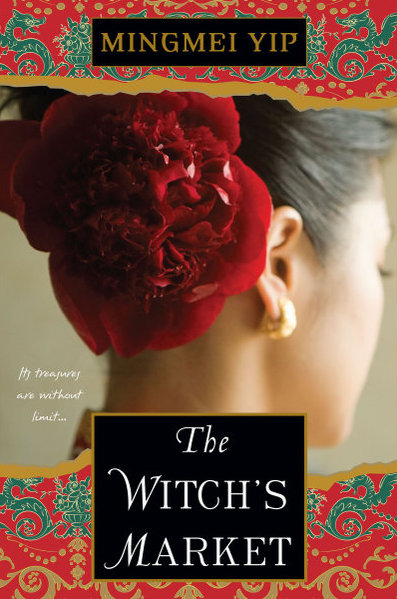
Chinese-American assistant professor Eileen Chen specializes in folk religion at her San Francisco college. Though her grandmother made her living as a shamaness, Eileen publicly dismisses witchcraft as mere superstition. Yet privately, the subject intrigues her.
When a research project takes her to the Canary Islands—long rumored to be home to real witches—Eileen is struck by the lush beauty of Tenerife and its blend of Spanish and Moroccan culture. A stranger invites her to a local market where women sell amulets, charms, and love spells. Gradually Eileen immerses herself in her exotic surroundings, finding romance with a handsome young furniture maker. But as she learns more about the lives of these self-proclaimed witches, Eileen must choose how much trust to place in this new and seductive world, where love, greed, and vengeance can be as powerful, or as destructive, as any magic.
We Were Witches
Ariel Gore

Check out our interview with Ariel Gore about We Were Witches!
Buying into the dream that education is the road out of poverty, a teen mom takes a chance on bettering herself, gets on welfare rolls, and talks her way into college. But once she’s there, phallocratic narratives permeate every subject, and creative writing professors depend heavily on Freytag’s pyramid to analyze life.
So Ariel turns to a rich subcultural canon of resistance and failure, populated by writers like Audre Lorde, Adrienne Rich, Gloria Anzaldúa, Tillie Olsen, and Kathy Acker. Wryly riffing on feminist literary tropes, We Were Witches documents the survival of a demonized single mother. She’s beset by custody disputes, homophobia, and America’s ever-present obsession with shaming strange women into passive citizenship. But even as the narrator struggles to graduate―often the triumphant climax of a dramatic plot―a question uncomfortably lingers. If you’re dealing with precarious parenthood, queer identity, and debt, what is the true narrative shape of your experience?
Calligraphy of the Witch
Alicia Gaspar de Alba

Born of a Spaniard and a mixed-race woman, young Concepcion Benavidez was apprenticed as a scribe to a convent. At nineteen, she escapes and is captured in the siege of Vera Cruz in 1683. She unexpectedly becomes the property of the Dutch pirate Laurens-Cornille de Graffe, who rapes her repeatedly on the long, deadly journey to the Massachusetts Bay Colony where he will sell his cargo. Realizing the young mestiza has fine penmanship, the pirate promptly sells her when they reach the cold New England coast. This riveting historical novel combines the horror of the Salem witch trials with the philosophy and poetry of the nun and writer known as the first feminist of the Americas, Sor Juana Ines de la Cruz. Meticulously researched and elegantly written, this novel takes a mesmerizing look at women in the New World in the 17th century and the stubborn men who accuse them for no reason.
Basic Witches: How to Summon Success, Banish Drama, and Raise Hell with Your Coven
Jaya Saxena and Jess Zimmerman
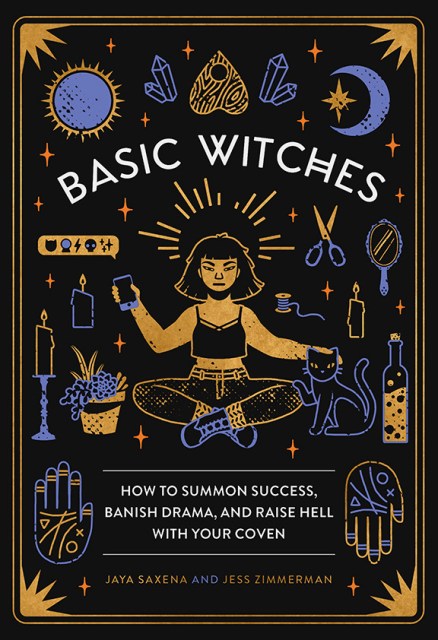
Want to feel terrifyingly beautiful? Wear the right color of eye shadow to project otherworldly glamour. Need to exorcise a toxic friendship? Repeat the proper incantation and make it disappear. Want to increase your energy? Whip up a tasty herbal “potion” to rev up your stamina. DIY projects, rituals, and spells—along with fun historical sidebars—summon the best trends of the modern witchy lifestyle and the time-trusted traditions of the hell-raising women of the past. With humor, heart, and a hip sensibility, Jaya Saxena and Jess Zimmerman dispense witchy wisdom for the curious, the cynical, and anyone who could use a magical boost.
White Is for Witching
Helen Oyeyemi
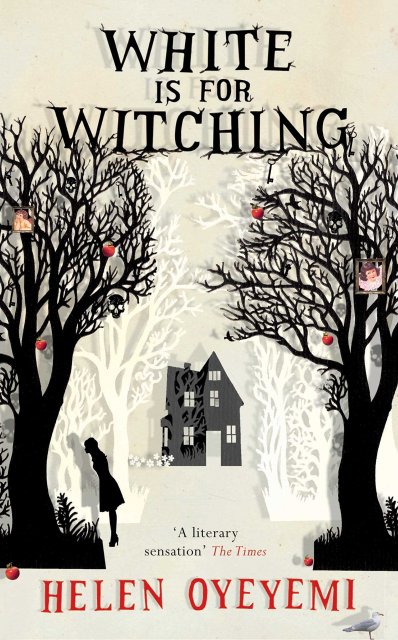
There’s something strange about the Silver family house in the closed-off town of Dover, England. Grand and cavernous with hidden passages and buried secrets, it’s been home to four generations of Silver women—Anna, Jennifer, Lily, and now Miranda, who has lived in the house with her twin brother, Eliot, ever since their father converted it to a bed-and-breakfast. The Silver women have always had a strong connection, a pull over one another that reaches across time and space, and when Lily, Miranda’s mother, passes away suddenly while on a trip abroad, Miranda begins suffering strange ailments. An eating disorder starves her. She begins hearing voices. When she brings a friend home, Dover’s hostility toward outsiders physically manifests within the four walls of the Silver house, and the lives of everyone inside are irrevocably changed. At once an unforgettable mystery and a meditation on race, nationality, and family legacies, White is for Witching is a boldly original, terrifying, and elegant novel by a prodigious talent.
Craft: How to Be a Modern Witch
Gabriela Herstik
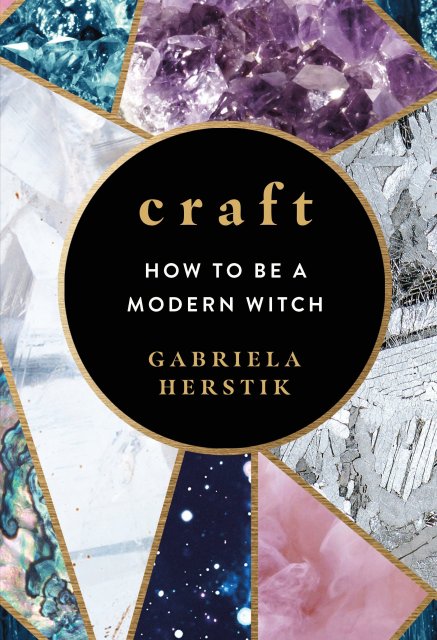
Writer, fashion alchemist and modern witch, Gabriela Herstik, unlocks the ancient art of witchcraft so that you can find a brand of magick that works for you. From working with crystals, tarot and astrology, to understanding sex magick, solstices and full moons; learn how to harness energy, unleash your inner psychic and connect with the natural world. Full of spells and rituals for self-care, new opportunities and keeping away toxic energy, Craft is the essential lifestyle guide for the modern woman who wants to take control and reconnect with herself.
Labyrinth Lost
Zoraida Córdova
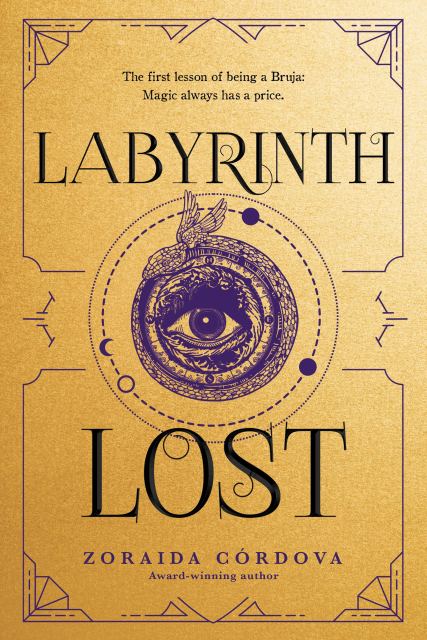
Included in Casey’s list of some of the best queer high fantasy!
Alex is a bruja, the most powerful witch in a generation… and she hates magic. At her Deathday celebration, Alex performs a spell to rid herself of her power. But it backfires. Her whole family vanishes into thin air, leaving her alone with Nova, a brujo boy she’s not sure she can trust, but who may be Alex’s only chance at saving her family.
Waking the Witch: Reflections on Women, Magic, Power
Pam Grossman
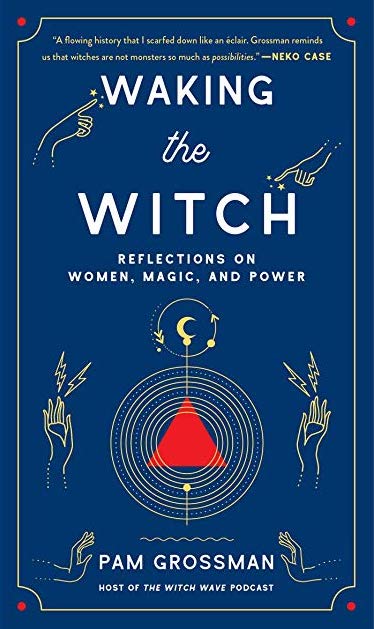
When you think of a witch, what do you picture? Pointy black hat, maybe a broomstick. But witches in various guises have been with us for millennia. In Waking the Witch, Pam Grossman explores the cultural and historical impact of the world’s most magical icon. From the idea of the femme fatale in league with the devil in early modern Europe and Salem, to the bewitching pop culture archetypes in Buffy the Vampire Slayer, Sabrina the Teenage Witch, and Harry Potter; from the spooky ladies in fairy tales and horror films to the rise of feminist covens and contemporary witchcraft, witches reflect the power and potential of women.
In this fascinating read that is part cultural analysis, part memoir, Pam opens up about her own journey on the path to witchcraft, and how her personal embrace of the witch helped her find strength, self-empowerment, and a deeper purpose.
Practical Magic
Alice Hoffman
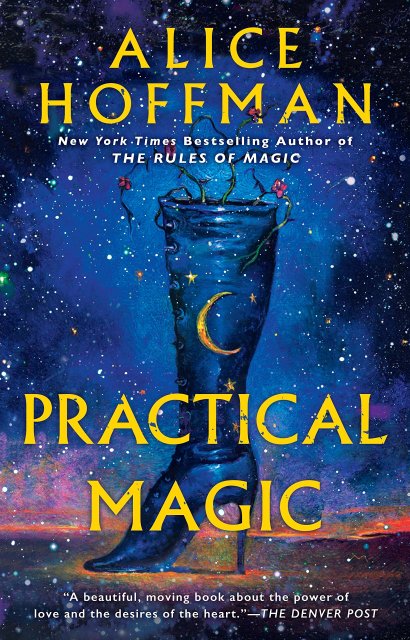
For more than two hundred years, the Owens women have been blamed for everything that has gone wrong in their Massachusetts town. Gillian and Sally have endured that fate as well: as children, the sisters were forever outsiders, taunted, talked about, pointed at. Their elderly aunts almost seemed to encourage the whispers of witchery, with their musty house and their exotic concoctions and their crowd of black cats. But all Gillian and Sally wanted was to escape. One will do so by marrying, the other by running away. But the bonds they share will bring them back—almost as if by magic…
Witches, Midwives, and Nurses: A History of Women Healers
Barbara Ehrenreich and Deirdre English
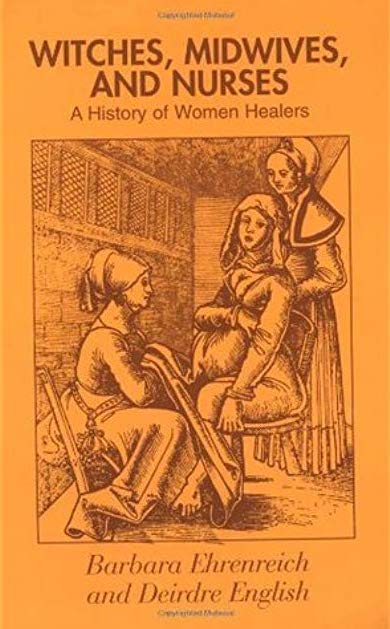
As we watch another agonizing attempt to shift the future of healthcare in the United States, we are reminded of the longevity of this crisis, and how firmly entrenched we are in a system that doesn’t work.
Witches, Midwives, and Nurses, first published by the Feminist Press in 1973, is an essential book about the corruption of the medical establishment and its historic roots in witch hunters. In this new edition, Barbara Ehrenreich and Deirdre English have written an entirely new chapter that delves into the current fascination with and controversies about witches, exposing our fears and fantasies. They build on their classic exposé on the demonization of women healers and the political and economic monopolization of medicine. This quick history brings us up-to-date, exploring today’s changing attitudes toward childbirth, alternative medicine, and modern-day witches.
In the Devil’s Snare: The Salem Witchcraft Crisis of 1692
Mary Beth Norton
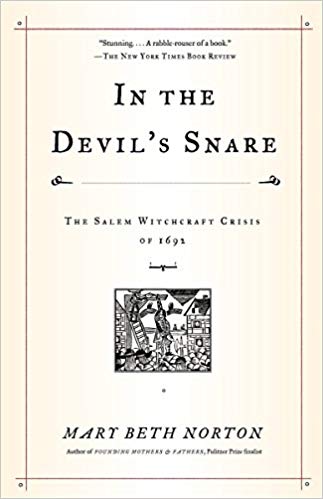
In her splendid re-creation of the notorious events of 1692, Cornell historian Norton (her Founding Mothers and Fathers was a Pulitzer finalist) offers fresh and provocative insights into the much-studied Salem witchcraft trials. Using newly available materials from the trial records, letters and diaries, she argues that a complex of political, military and religious factors led to the outbreak of hysterical fits and other behavior that ended in the infamous trials.
Initiated: Memoir of a Witch
Amanda Yates Garcia
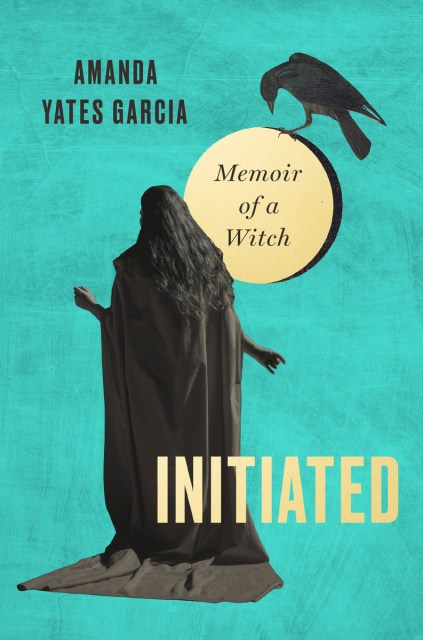
Traditional Wiccan initiates are usually brought into the craft through a ceremony with a High Priestess. But even though Amanda Yates Garcia’s mother, a practicing witch herself, initiated her into the earth-centered practice of witchcraft when she was 13 years old, Amanda’s real life as a witch only began when she underwent a series of spontaneous initiations of her own.
Descending into the underworlds of poverty, sex work, and misogyny, Initiated describes Amanda’s journey to return to her body, harness her power, and create the magical world she longed for through witchcraft. Hailed by crows, seduced by magicians, and haunted by ancestors broken beneath the wheels of patriarchy, Amanda’s quest for self-discovery and empowerment is a deep exploration of a modern witch’s trials – healing ancient wounds, chafing against cultural expectations, creating intimacy – all while on a mission to re-enchant the world. Peppered with mythology, tales of the goddesses and magical women throughout history, Initiated stands squarely at the intersection of witchcraft and feminism. With generosity and heart, this book speaks to the question: is it possible to live a life of beauty and integrity in a world that feels like it’s dying?
I, Tituba, Black Witch of Salem
Maryse Condé
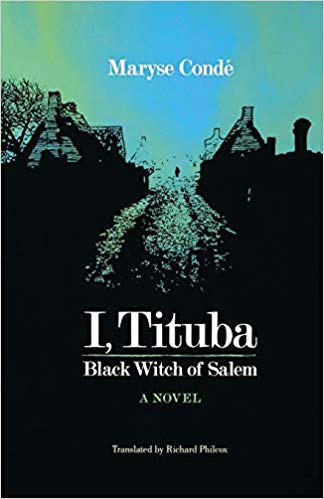
This wild and entertaining novel expands on the true story of the West Indian slave Tituba, who was accused of witchcraft in Salem, Massachusetts, arrested in 1692, and forgotten in jail until the general amnesty for witches two years later. Maryse Condé brings Tituba out of historical silence and creates for her a fictional childhood, adolescence, and old age.
These Witches Don’t Burn
Isabel Sterling
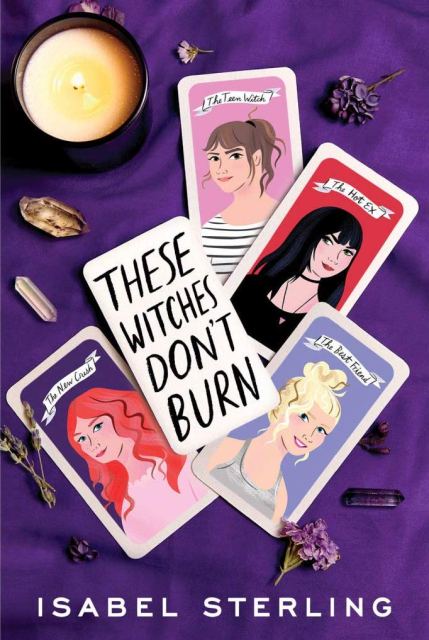
Hannah’s a witch, but not the kind you’re thinking of. She’s the real deal, an Elemental with the power to control fire, earth, water, and air. But even though she lives in Salem, Massachusetts, her magic is a secret she has to keep to herself. If she’s ever caught using it in front of a Reg (read: non-witch), she could lose it. For good. So, Hannah spends most of her time avoiding her ex-girlfriend (and fellow Elemental Witch) Veronica, hanging out with her best friend, and working at the Fly by Night Cauldron selling candles and crystals to tourists, goths, and local Wiccans.
But dealing with her ex is the least of Hannah’s concerns when a terrifying blood ritual interrupts the end-of-school-year bonfire. Evidence of dark magic begins to appear all over Salem, and Hannah’s sure it’s the work of a deadly Blood Witch. The issue is, her coven is less than convinced, forcing Hannah to team up with the last person she wants to see: Veronica. Isabel Sterling’s delightful, suspenseful debut is equal parts sweet romance and thrilling mystery. With everything she loves on the line, Hannah must confront this murderous villain before her coven–and any chance she has with the new girl–is destroyed.
The Malleus Maleficarum
Heinrich Kramer and James Sprenger, trans. Montague Summers

For nearly three centuries Malleus Maleficarum (The Witches’ Hammer) was the professional manual for witch hunters. This work by two of the most famous Inquisitors of the age is still a document of the forces of that era’s beliefs. Under a Bull of Pope Innocent VIII, Kramer and Sprenger exposed the heresy of those who did not believe in witches and set forth the proper order of the world with devils, witches, and the will of God. Even if you do not believe in witchcraft, the world of 1484 did. This famous document should interest the historian, the student of witchcraft and the occult, and the psychologist who is interested in the medieval mind as it was confronted with various forces which could be explained only by witchcraft.
Witch
Rebecca Tamás
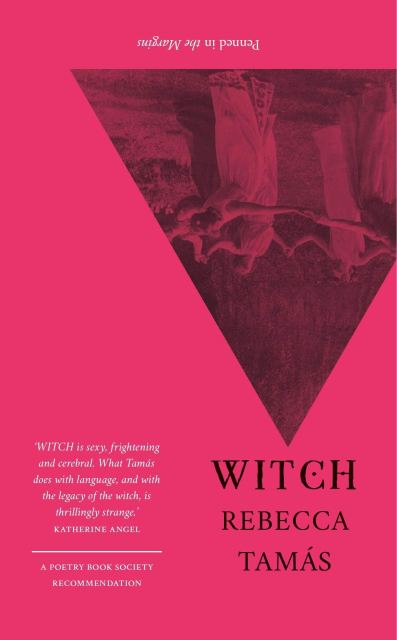
WITCH by Rebecca Tamás is a raw, strange book of poems that merges feminist exploration with occult expression and ecological language. At turns lyrical, philosophical and obscene, Tamás’s astonishing debut evokes the sexual prowess of nature as an organism that swallows and consumes. These are poems that unsettle the reader, taking them to dark, magical places where earth and blood, politics and pornography, intermingle; they celebrate poetry as a small, bright, filthy song.
The Witches of New York
Ami McKay
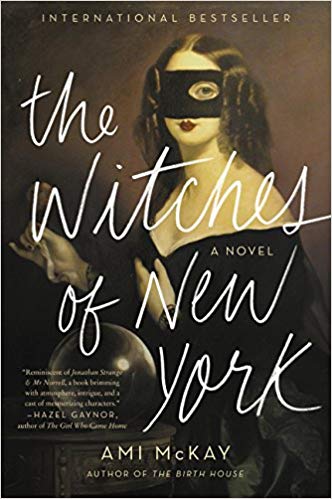
New York in the spring of 1880 is a place alive with wonder and curiosity. Determined to learn the truth about the world, its residents enthusiastically engage in both scientific experimentation and spiritualist pursuits. Séances are the entertainment of choice in exclusive social circles, and many enterprising women—some possessed of true intuitive powers, and some gifted with the art of performance—find work as mediums.
Enter Adelaide Thom and Eleanor St. Clair. At their humble teashop, Tea and Sympathy, they provide a place for whispered confessions, secret cures, and spiritual assignations for a select society of ladies, who speak the right words and ask the right questions. But the profile of Tea and Sympathy is about to change with the fortuitous arrival of Beatrice Dunn.
Royal Witches: From Joan of Navarre to Elizabeth Woodville
Gemma Hollman
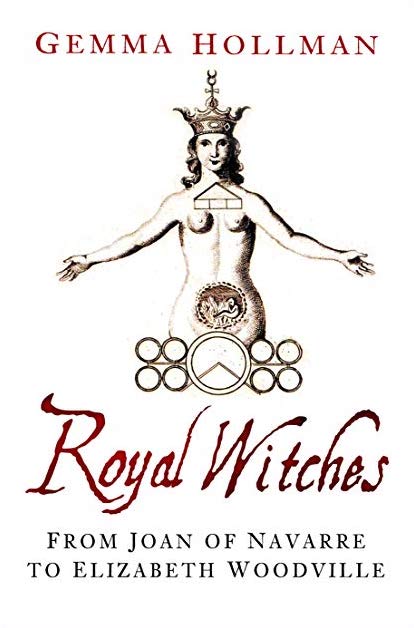
Until the mass hysteria of the seventeenth century, accusations of witchcraft in England were rare. However, four royal women, related in family and in court ties – Joan of Navarre, Eleanor Cobham, Jacquetta of Luxembourg and Elizabeth Woodville – were accused of practising witchcraft in order to kill or influence the king. Some of these women may have turned to the dark arts, but the purpose of the accusations was purely political. Despite their status, these women were vulnerable because of their gender as the men around them moved them like pawns for political gains. In Royal Witches, Gemma Hollman explores the lives and the cases of these so-called witches. In a time when the line between science and magic was blurred, these trials offer a tantalising insight of how malicious magic would be used and cause such mass hysteria in centuries to come.
Drawing Down the Moon: Witches, Druids, Goddess-Worshippers, and Other Pagans in America
Margot Adler
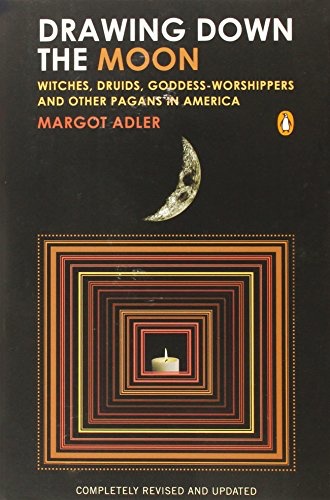
Almost thirty years since its original publication, Drawing Down the Moon continues to be the only detailed history of the burgeoning but still widely misunderstood Neo- Pagan subculture. Margot Adler attended ritual gatherings and interviewed a diverse, colorful gallery of people across the United States, people who find inspiration in ancient deities, nature, myth, even science fiction. In this new edition featuring an updated resource guide of newsletters, journals, books, groups, and festivals, Margot Adler takes a fascinating and honest look at the religious experiences, beliefs, and lifestyles of modern America’s Pagan groups.
Literary Witches: A Celebration of Magical Women Writers
Taisia Kitaiskaia
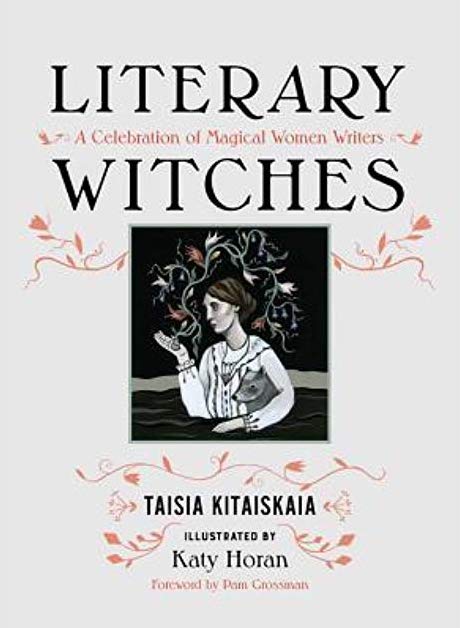
Literary Witches draws a connection between witches and visionary writers: both are figures of formidable creativity, empowerment, and general badassery. Through poetic portraits, Taisia Kitaiskaia and Katy Horan honor the witchy qualities of well-known and obscure authors alike, including Virginia Woolf, Mira Bai, Toni Morrison, Emily Dickinson, Octavia E. Butler, Sandra Cisneros, and many more.
Akata Witch
Nnedi Okorafor
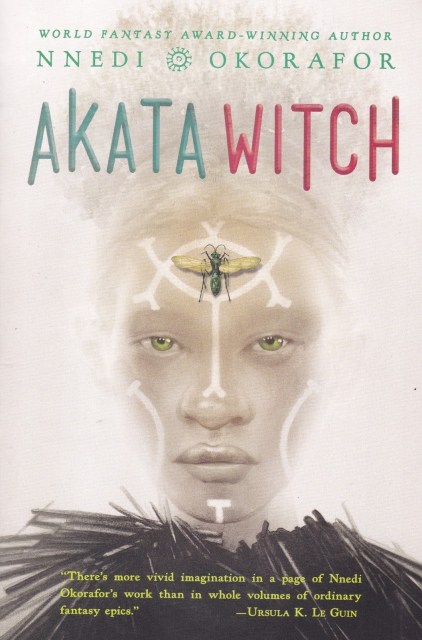
Sunny Nwazue lives in Nigeria, but she was born in New York City. Her features are West African, but she’s albino. She’s a terrific athlete, but can’t go out into the sun to play soccer. There seems to be no place where she fits in. And then she discovers something amazing—she is a “free agent” with latent magical power. And she has a lot of catching up to do. Soon she’s part of a quartet of magic students, studying the visible and invisible, learning to change reality. But as she’s finding her footing, Sunny and her friends are asked by the magical authorities to help track down a career criminal who knows magic, too. Will their training be enough to help them combat a threat whose powers greatly outnumber theirs?
Becoming Dangerous: Witchy Femmes, Queer Conjurers, and Magical Rebels
Katie West and Jasmine Elliott
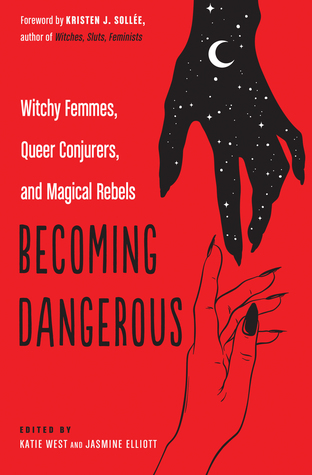
Edgy and often deeply personal, the twenty-one essays collected here come from a wide variety of writers. Some identify as witches, others identify as writers, musicians, game developers, or artists. What they have in common is that they’ve created personal rituals to summon their own power in a world that would prefer them powerless. Here, they share the rituals they use to resist self-doubt, grief, and depression in the face of sexism, slut shaming, racism, patriarchy, and other systems of oppression.
Witches, Witch-Hunting, and Women
Silvia Federici
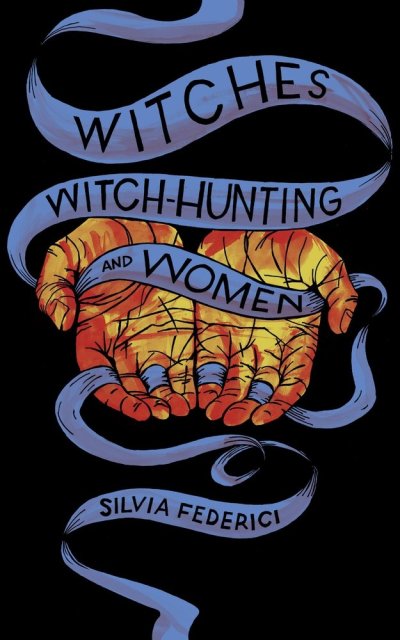
The world is witnessing a new surge of interpersonal and institutional violence against women, including new witch hunts. This surge of violence has occurred alongside an expansion of capitalist social relation. In this new work, Silvia Federici examines the root causes of these developments and outlines the consequences for the women affected and their communities. She argues, that this new war on women, a mirror of witch hunts in 16th- and 17th-century Europe and the “New World,” is a structural element of the new forms of capitalist accumulation. These processes are founded on the destruction of people’s most basic means of reproduction. Like at the dawn of capitalism, the factors behind today’s violence against women are processes of enclosure, land dispossession, and the remolding of women’s reproductive activities and subjectivity.
Hexing the Patriarchy: 26 Potions, Spells, and Magical Elixirs to Embolden the Resistance
Ariel Gore
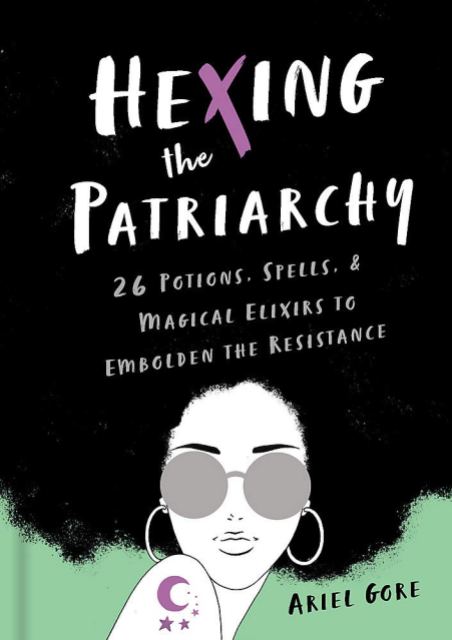
Skeptics might think witchcraft is nothing more than a fad, but make no mistake: modern witches aren’t playing around. Today’s wizarding women are raising hell, exorcising haters, and revving up to fight fire with a fierce inferno of magical outrage. Magic has always been a weapon of the disenfranchised, and in Hexing the Patriarchy, author Ariel Gore offers a playbook for the feminist uprising. Full of incantations, enchantments, rituals, and witchy wisdom designed protect women and bring down The Man, readers will learn how to . . .
- Make salt scrubs to wash away patriarchal bullshit
- Mix potions to run abusive liars out of town
- Use their bare hands and feet to vanquish bro culture
- Conjure dead relatives to help smash the system
From summoning Ancestors to leveraging the Zodiac, these twenty-six alphabetically inspired spells are ready-made recipes for toppling the patriarchy with a dangerously divine, they-never-saw-it-coming power.
The Familiars
Stacey Halls
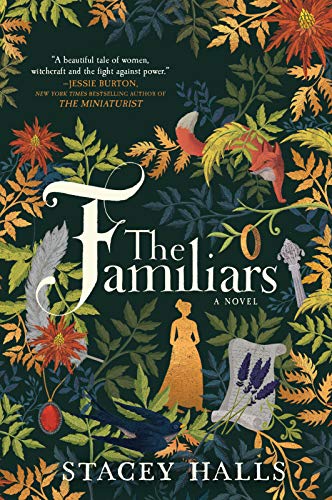
Fleetwood Shuttleworth, the mistress of Pendle Hill’s Gawthorpe Hall, is with child. Anxious to produce an heir, she is distraught to find a letter from her physician that warns her husband she will not survive this pregnancy.
Devastated, Fleetwood wanders the estate grounds, where she catches a young woman poaching. Alice Gray claims she is a local midwife and promises to help Fleetwood deliver a healthy baby. But a witch-obsessed frenzy sweeps the countryside. Even woodland creatures or “familiars” are thought to be dark companions of the unholy. And Alice soon stands accused of witchcraft. Time is running out. The witch trials are about to begin. With both their lives at stake, Fleetwood must prove Alice’s innocence. Only they know the truth.
Set against the real Pendle witch trials, this compelling novel draws its characters from historical figures as it explores the lives of seventeenth-century women. Ultimately it raises the question: Was witch hunting really just women hunting?
The Near Witch
V.E. Schwab
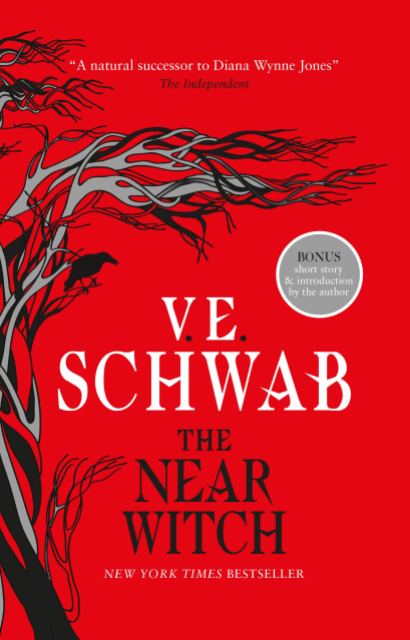
The Near Witch is only an old story told to frighten children. If the wind calls at night, you must not listen. The wind is lonely, and always looking for company. There are no strangers in the town of Near. These are the truths that Lexi has heard all her life. But when an actual stranger, a boy who seems to fade like smoke, appears outside her home on the moor at night, she knows that at least one of these sayings is no longer true. The next night, the children of Near start disappearing from their beds, and the mysterious boy falls under suspicion. As the hunt for the children intensifies, so does Lexi’s need to know about the witch that just might be more than a bedtime story, about the wind that seems to speak through the walls at night, and about the history of this nameless boy. Part fairy tale, part love story, Victoria Schwab’s debut novel is entirely original yet achingly familiar: a song you heard long ago, a whisper carried by the wind, and a dream you won’t soon forget.
The Magic of Marie Laveau: Embracing the Spiritual Legacy of the Voodoo Queen of New Orleans
Denise Alvarado
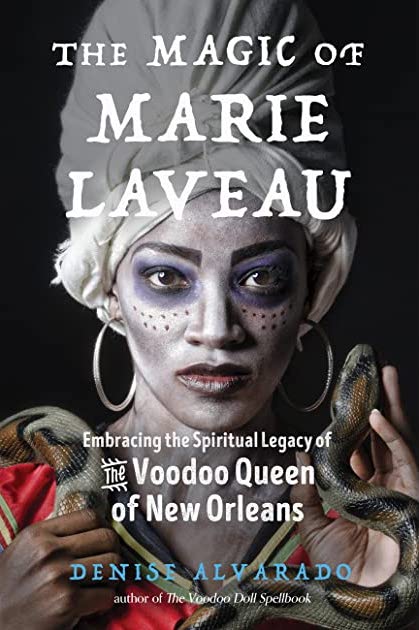
Marie Laveau may be the most influential American practitioner of the magical arts; certainly, she is among the most famous. She is the subject of songs, films, and legends and the star of New Orleans ghost tours. Her grave in New Orleans ranks among the most popular spiritual pilgrimages in the US. Devotees venerate votive images of Laveau, who proclaimed herself the “Pope of Voodoo.” She is the subject of respected historical biographies and the inspiration for novels by Francine Prose and Jewell Parker Rhodes. She even appears in Marvel Comics and on the television show American Horror Story: Coven, where she was portrayed by Angela Bassett.
Author Denise Alvarado explores Marie Laveau’s life and work–the fascinating history and mystery. This book gives an overview of New Orleans Voodoo, its origins, history, and practices. It contains spells, prayers, rituals, recipes, and instructions for constructing New Orleans voodoo-style altars and crafting a voodoo amulet known as a gris-gris.
Revolutionary Witchcraft: A Guide to Magical Activism
Sarah Lyons
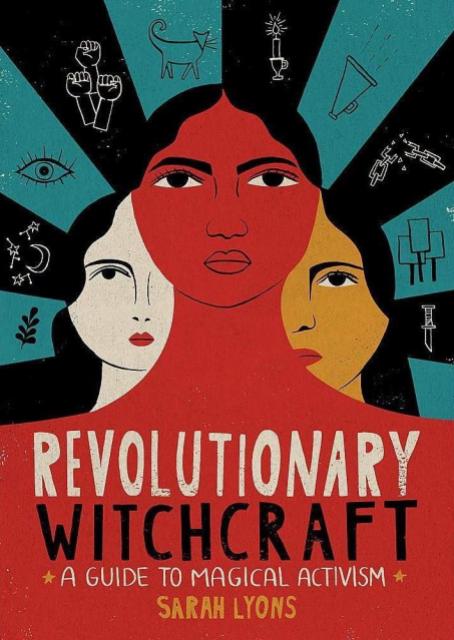
A fiery, inclusive guide for activists and witches alike, Revolutionary Witchcraft is an empowered introduction to the history and practice of politically-motivated magic.
From the politically charged origins of the word “witch” to the present-day magical resistance, this bold handbook explores the role of witchcraft in our modern world. Author, activist, and practicing witch Sarah Lyons takes readers on a journey through a leftist history of magic — from the witch hunts of early modern England, through the Salem Witch Trials, and up to our present moment. Pairing mystical acts, including sigil magic and soul flight, with core organizing tactics, like power mapping and protests, Revolutionary Witchcraft offers a blueprint for building a politically grounded magical praxis.
From social justice to environmental activism, this radical reimagining of political activism addresses today’s most pressing problems with empowering, inclusive rituals and magical actions. Each chapter introduces a key concept, like dreaming big, experiencing magical initiation, and joining the revolution, supported by a galvanizing historical case study on the power of mystical action. Full of actionable ideas for magical organizing, and an appendix packed with customizable spells, Revolutionary Witchcraft is the perfect companion for the magical uprising.
Toil & Trouble: 15 Tales of Women & Witchcraft
Tess Sharpe and Jessica Spotswood
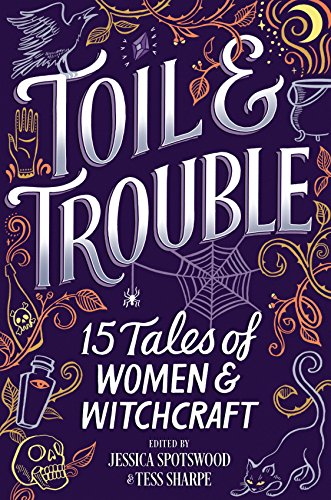
History is filled with stories of women accused of witchcraft, of fearsome girls with arcane knowledge. Toil & Trouble features fifteen stories of girls embracing their power, reclaiming their destinies and using their magic to create, to curse, to cure–and to kill. A young witch uses social media to connect with her astrology clients–and with a NASA-loving girl as cute as she is skeptical. A priestess of death investigates a ritualized murder. A bruja who cures lovesickness might need the remedy herself when she falls in love with an altar boy. A theater production is turned upside down by a visiting churel. In Reconstruction-era Texas, a water witch uses her magic to survive the soldiers who have invaded her desert oasis. And in the near future, a group of girls accused of witchcraft must find their collective power in order to destroy their captors.
Witches: The Transformative Power of Women Working Together
Sam George-Allen
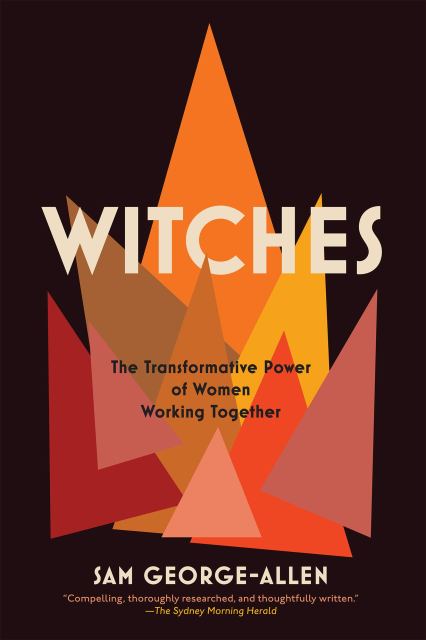
Covens. Girl Bands. Ballet troupes. Convents. In all times and places, girls and women have come together in communities of vocation, of necessity, of support. In Witches, Sam George-Allen explores how wherever women gather, magic happens. Female farmers change the way we grow our food. Online beauty communities democratize skin-care rituals. And more than any other demographic, it’s teen girls that shape our culture.
Patriarchal societies have long been content to champion boys’ clubs, while viewing groups that exclude men as sites of rivalry and suspicion. This deeply personal investigation takes us from our workplaces to our social circles, surveying our heroes, our outcasts, and ourselves, in order to dismantle the persistent and pernicious cultural myth of female isolation and competition . . . once and for all.
Witch Hunt: A Traveler’s Guide to the Power and Persecution of the Witch
Kristen J. Sollee
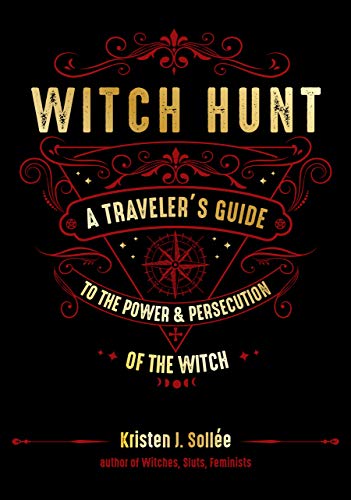
Traveling through cities and sites across Italy, France, Germany, Ireland, the United Kingdom, and the United States, Kristen J. Sollée–a second-generation witch herself–explores the witch as a figure of female power and persecution. By infusing an adventurous first-person narrative with extensive research and imaginative historical fiction, Witch Hunt captures the magic of travel to make an often-overlooked period of history come alive.
Between the 15th-17th centuries, a confluence of political, economic, and religious factors inspired witch hysteria to ignite like wildfire across Europe, and, later, parts of America. At the heart of the witch hunts were often dangerous misconceptions about femininity and female sexuality, and women were disproportionately punished as a result. Today, this lineage of oppression remains an important reference point through which we can contemplate women’s rights–and human rights–in the Western world and beyond.
Witch Hunt isn’t only an exploration of the horrors of history, but also uncovers how the archetype of the witch has been rehabilitated. For witches are not just haunting figures of the past; the witch is also a liberatory icon and identity of the present.
The Witchcraft of Salem Village
Shirley Jackson

Stories of magic, superstition, and witchcraft were strictly forbidden in the little town of Salem Village. But a group of young girls ignored those rules, spellbound by the tales told by a woman named Tituba. When questioned about their activities, the terrified girls set off a whirlwind of controversy as they accused townsperson after townsperson of being witches. Author Shirley Jackson [ed note: yes, that Shirley Jackson] examines in careful detail this horrifying true story of accusations, trials, and executions that shook a community to its foundations.
The Witch Doesn’t Burn in This One
Amanda Lovelace

The witch: supernaturally powerful, inscrutably independent, and now–indestructible. These moving, relatable poems encourage resilience and embolden women to take control of their own stories. Enemies try to judge, oppress, and marginalize her, but the witch doesn’t burn in this one.
Witchy
Ariel Slamet Ries
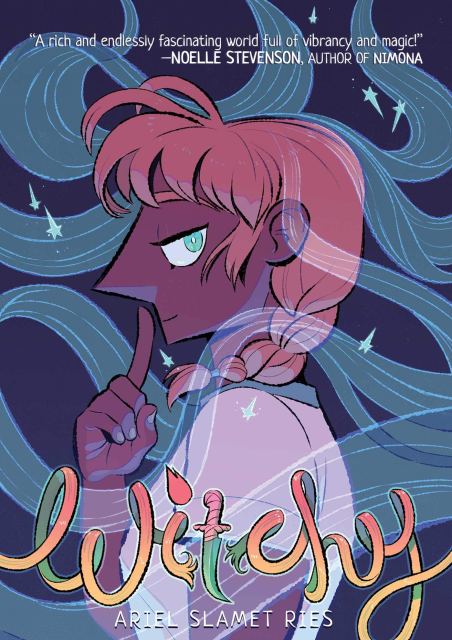
In the witch kingdom Hyalin, the strength of your magic is determined by the length of your hair. Those that are strong enough are conscripted by the Witch Guard, who enforce the law in peacetime and protect the land during war. However, those with hair judged too long are pronounced enemies of the kingdom, and annihilated. This is called a witch burning.
Witchy is a young adult graphic novel about the young witch Nyneve, who is haunted by the death of her father and the threat the Witch Guard poses to her own life. When conscription rolls around, Nyneve has a choice to make; join the institution complicit in her father’s death, or stand up for her ideals?
A Deadly Education
Naomi Novik
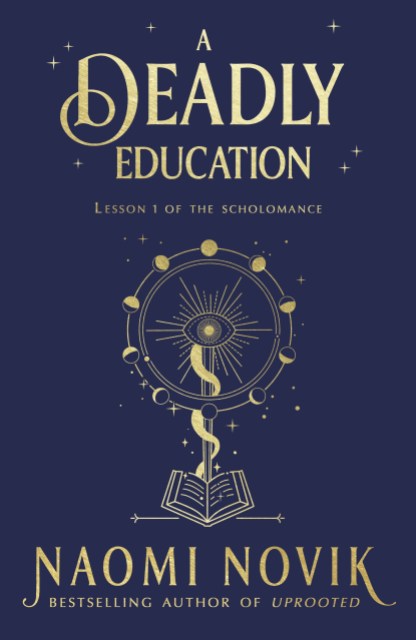
I decided that Orion Lake needed to die after the second time he saved my life. Everyone loves Orion Lake. Everyone else, that is. Far as I’m concerned, he can keep his flashy combat magic to himself. I’m not joining his pack of adoring fans. I don’t need help surviving the Scholomance, even if they do. Forget the hordes of monsters and cursed artifacts, I’m probably the most dangerous thing in the place. Just give me a chance and I’ll level mountains and kill untold millions, make myself the dark queen of the world. At least, that’s what the world expects me to do. Most of the other students in here would be delighted if Orion killed me like one more evil thing that’s crawled out of the drains. Sometimes I think they want me to turn into the evil witch they assume I am. The school itself certainly does. But the Scholomance isn’t getting what it wants from me. And neither is Orion Lake. I may not be anyone’s idea of the shining hero, but I’m going to make it out of this place alive, and I’m not going to slaughter thousands to do it, either.
Although I’m giving serious consideration to just one.
The Year of the Witching
Alexis Henderson
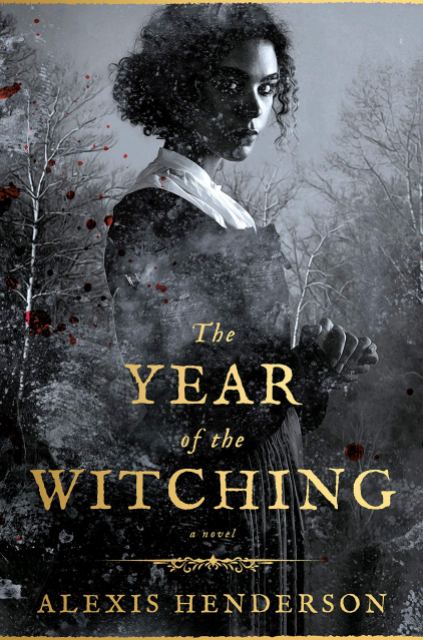
In the lands of Bethel, where the Prophet’s word is law, Immanuelle Moore’s very existence is blasphemy. Her mother’s union with an outsider of a different race cast her once-proud family into disgrace, so Immanuelle does her best to worship the Father, follow Holy Protocol, and lead a life of submission, devotion, and absolute conformity, like all the other women in the settlement. But a mishap lures her into the forbidden Darkwood surrounding Bethel, where the first prophet once chased and killed four powerful witches. Their spirits are still lurking there, and they bestow a gift on Immanuelle: the journal of her dead mother, who Immanuelle is shocked to learn once sought sanctuary in the wood. Fascinated by the secrets in the diary, Immanuelle finds herself struggling to understand how her mother could have consorted with the witches. But when she begins to learn grim truths about the Church and its history, she realizes the true threat to Bethel is its own darkness. And she starts to understand that if Bethel is to change, it must begin with her.
Conjure Women
Afia Atakora
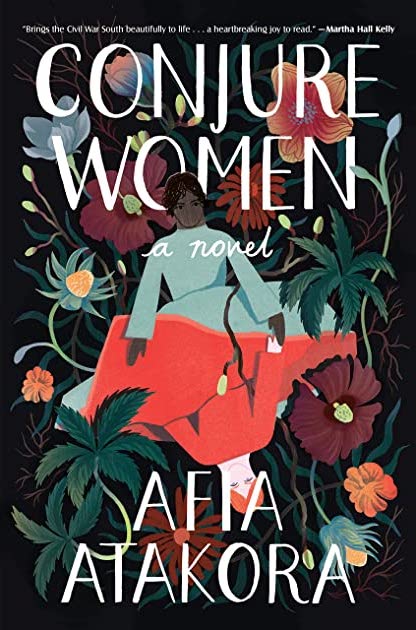
Conjure Women is a sweeping story that brings the world of the South before and after the Civil War vividly to life. Spanning eras and generations, it tells of the lives of three unforgettable women: Miss May Belle, a wise healing woman; her precocious and observant daughter Rue, who is reluctant to follow in her mother’s footsteps as a midwife; and their master’s daughter Varina. The secrets and bonds among these women and their community come to a head at the beginning of a war and at the birth of an accursed child, who sets the townspeople alight with fear and a spreading superstition that threatens their newly won, tenuous freedom.
shop all our witch book recommendations



This is an EXCELLENT FUCKING LIST! We Were Witches broke my world open; it was the perfect book to read right after the 2016 election.
AND the cover looks like a picture taken at my house!
I love the list! Witches, midwives and nurses has been on my to read list for a while, I’ve heard great things about it. (And when I was young I wanted to be both a midwive and a witch. I eventually became a doctor with an interest in paganism.)
Just an off-topic question: Why do you guys link to Amazon? I’m not really a fan of their employee policies and the exploitation of their capitalist monoply. I’d rather support my local feminist/queer bookstore. Or honestly: any online bookstore that is not amazon.
It’s probably because they get a kickback from books purchased through that link, and that IndieBound et. al. don’t offer that option.
(It’s a hard world out there, existing in capitalism is rough, regulation is arguably more effective than boycotting, etc etc)
That does make sense, and I absolutely don’t blame AS for making that choice. (Assuming they did.) Just wanted to know.
I know what it’s like to have to balance ethical choices, mental health choices and budget choices. It sucks.
I believe what other replies say about the potential kickbacks is right, but if you have contributed to AS in the past or planned to in the future anyway (with the fundraisers, merch, A+, etc.) I don’t see the harm in typing the books you want in Indiebound and spead the financial support across buisnesses in need.
Just here to say that 1) This list is incredible and 2) The author of Initiated, Amanda Yates Garcia, is a close friend of mine, the best witch I know, and as such I selfishly want everyone in the world to read her book!
Yay thank you for putting this together! Always love AS book recommendations. Now excuse me while I copy/paste this link onto my library list
@internrachel ~ is it possible to link to “In the Devil’s snare” using another synopsis? This one is extremely racist/ colonialist, and I know that’s representing the opposite of what this list is about.
Thank you so much!
sure, updated! thank you for pointing it out!
Thank you so much 💜
Malleus Maleficarum! This list is great. I had a college history class about witchcraft and wrote a paper about impotence as described by the Malleus Maleficarum. Now I have to read the rest of these.
This is so great, thank you! I’ll start with Witches, Witch-Hunting, and Women.
Ariel Gore just released a new book a few days ago!!
Hexing the Patriarchy: 26 Potions, Spells, and Magical Elixirs to Embolden the Resistance
It’s YA, but an unapologetically queer witch story that I just read, is called The Lost Coast by Amy Rose Capetta. I found it breathtaking and read it in 1 day.
I also JUST read this one! Super queer, and the depiction of magic is breathtaking.
This! Is! Glorious! We Were Witches is such an incredible book. Also I’ve been know to give copies of Witches, Midwives and Nurses as gifts. I can’t wait read more of the books on this list!
Two additional witch book recommendations:
The Tiffany Aching series Terry Pratchett
https://bookshop.org/books/the-wee-free-men/9780060012380?aid=48&listref=comfort-reading-for-when-there-s-too-much-happening-all-the-time (first book in the series)
Weetzie Bat books (in particular the character Witch Baby) by Francesca Lia Block
https://bookshop.org/books/dangerous-angels-five-weetzie-bat-books/9780062007407
Becoming Dangerous was an IMMENSELY formative book for me when I was going through some shit. I’d recommend it 10000% for anyone feeling raw and looking to put some kick-ass in their step.
Thanks for compiling this list!!
So I haven’t read White is for Witching, but given that one of Helen Oyeyemi’s other books (Boy, Snow, Bird) had a pretty transphobic storyline, I’m uncomfortable with her work being on this list.
Thank you for these recs. Based on the multiple positive mentions, I just read we were witches, and I just wanted to say thank you! I’ve been reading a ton since quarantine started and this is a list topper for sure.
Very helpful thanks post! I often read such things when looking for books for the future, because it helps to quickly understand the main points and make a choice. I also often visit various services for self-education, among which site https://studydriver.com/black-death-essay/, where you can learn significance of the Black death and a selection of various materials on this complex topic, go to read and know more, good luck!